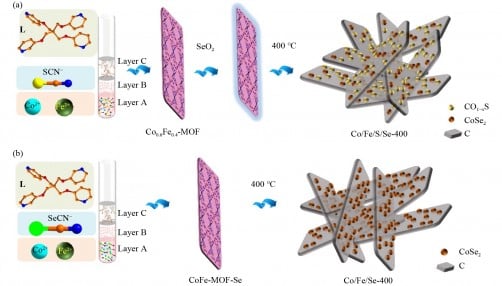Innovative research from a team at Jianghan University and Fuzhou University has led to the development of advanced electrocatalysts for overall water splitting, utilizing two-dimensional (2D) bimetallic selenium-containing metal-organic frameworks (MOFs). This breakthrough addresses the challenges of traditional methods that have relied on high-energy consumption and inconsistent product structures.
Researchers, including Wang-ting Lu, Fan Yu, and Yun Zheng, explored the potential of transition metal selenides as effective electrocatalysts. They focused on overcoming the limitations of conventional MOF-derived selenides, which are typically synthesized through self-sacrificing template methods. These traditional techniques often result in difficulties in controlling the structural and compositional uniformity during pyrolysis.
To create high-efficiency Se-containing electrocatalysts, the researchers employed two innovative strategies to incorporate selenium into the Co–Fe MOF. The first method involved etching the prepared MOF using a selenium dioxide (SeO2) solution. The second strategy replaced thiocyanate (SCN−) with selenocyanate (SeCN−) as a structural unit within the framework.
The electrochemical performance of the resulting Se-containing electrocatalysts was rigorously tested for their effectiveness in catalyzing both the hydrogen evolution reaction (HER) and the oxygen evolution reaction (OER). The findings indicated that both approaches for introducing selenium significantly enhanced HER performance during water splitting processes.
The superior electrochemical performance is attributed to the unique 2D hierarchical porous structure of the materials and a strong synergistic effect among the various components. This research confirms that the thoughtful design of layered MOFs containing sulfur or selenium linkers can facilitate the creation of economical and energy-efficient electrocatalysts.
This study not only highlights the potential of these new materials for water splitting but also offers a novel approach for the synthesis of MOF-based metallic selenides. As the demand for sustainable energy solutions grows, such advancements are imperative for developing efficient electrocatalysts that can operate with reduced energy input.
The full findings of this research were published in March 2024, contributing valuable insights to the field of electrocatalysis and renewable energy technologies.
